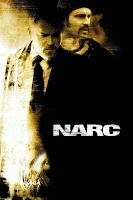The Need for BIPOC Histories in Today’s Classrooms
Unfortunately, for a city half composed of immigrants, most school class curriculums are extremely lacking in culturally relevant pedagogy that are inclusive to Black, Indigenous and People of Color (BIPOC) or honor their contributions in building Canadian society. Even Canada’s own horrific relationship with First Nations Peoples are brushed aside, in favor of sharing the falsely heroic narrative of how the British sailed the seas and colonized this land.
In the exclusion of BIPOC subjects, our school boards continue to perpetuate the idea that only European histories are worth telling. If BIPOC stories, histories and contributions from the past are not worthwhile, then how can we, as a Canadian society, truly respect the culture and values of BIPOC communities? Considering the impact of internalize hatred deemed as the manifestation of self-hatred for oneself and/or one’s own culture, and the prevalence of negative racial stereotypes, it is a question that many students ask themselves today?
The exclusion of BIPOC stories and histories deems the perspective of a large group of people meaningless, stripping these communities of their voice and pride. In recent years, school boards have attempted to address this issue by token efforts to celebrate special BIPOC cultural events such as Chinese New Years, Black History Month, Indigenous Day, etc. However, these dismal attempts fail to hide the almost complete absence of cultural representation in the day to day curriculum, sending an implicit message that BIPOC students are “lesser than” their white peers. From an early age, this message of less worth is learned and as these students grow, its reinforced by the world around them. That is, however, if these messages remain unchallenged.
Lack of diversity is another problem. In the field of education, around 80% of teachers are white and it is difficult to gage if teaching faculties have a clear enough grasp of BIPOC perspectives to sufficiently include these narratives within lesson plans. This lack of diversity within the teaching profession can also hinder a BIPOC student’s connection to pursuing teaching as a career path. If youth do not see proper representation, they can feel out of place, making it harder for them to connect to mentors or role models. This problem - alongside the financial challenges posed by pursuing higher education - can make youth seriously doubt whether they fit into the academic world or not. This insecurity can rob our society of gifted minds, rob students of reaching their full potential, and continue the cycle of academic inequality for BIPOC students in the future.
The issue of cultural exclusion within the classroom is not a problem exclusive to the present day. This can be traced back to one of Canada’s deepest shames: the residential schools. “Indian” residential schools operated in Canada between the 1870s and the 1990s. Native children were forced to leave behind their families, their religions, and their beliefs in order to be “educated.” This led to many years of abuse, and eventual cultural genocide.
The goals of assimilation into Canadian society may not be as overt in today’s time, but they still linger. This is proven whenever black students are sent home due to their hairstyles, or even when a teacher refuses to use preferred names or pronouns of a student. Whether conscious or subconscious, the habit of rejecting anything outside the norm needs to be recognized and challenged; especially within the classrooms, where so many young minds are left vulnerable and looking for guidance.
Today, we must actively question what perspectives have been absent or ignored, then seek out these perspectives from their respective sources. This may mean hiring a BIPOC teacher, or adding readings by BIPOC writers to the curriculum, or simply by listening to the story of a newly immigrated classmate. We must continuously search for “the other side” to the narratives we have long been taught. Though uncovering these stories may illuminate further tragedies and disrupt Canada’s comfortable reputation as the “nice” country, it is the first step we can take in our attempt to honor the past. In rectifying this, it is the only way we can move towards the future.
As Mandela often said, “Education is the most powerful weapon which you can use to change the world.”
To watch video click link below:
https://www.youtube.com/watch?v=tPz6LF1pVIE
 Written by
Written by
Minerva Navasca
Youth Journalist
FOCUS Media Arts Centre



Comments
Post a Comment